More Website Templates @ TemplateMonster.com - January28, 2013!
As the Birth Place of Christ, the ancient town of Bethlehem holds a connection with Christians from all around the World. While small in size and population, the Town of Bethlehem and its surroundings have lots to offer to any visitor or tourists. At the heart of the town lies the Church of the Nativity. Inside the church is the Grotto of the nativity marking the spot where Jesus was born. The old cores of the Bethlehem have been beautifully restored and renovated offering beautiful and enriching walking tours throughout the city. The many cultural centers in and around Bethlehem continue to hold regular musical and cultural events throughout the year. Check out the Addar Cultural and Conference Center which is located in the heart of Bethlehem at the International Center of Bethlehem Dar Annadwa. Also visit the Bethlehem Peace Center which is located right on Manger Square. The Center houses a Tourist information Center and regularly hold cultural activities. Check local listing for any events and activities during you stay or prior to your visit.
Beit Sahour
Located a few kms southeast of Bethlehem, lies the town of Beit Sahour and Shepherds Field where the angle announced to the shepherds the birth of Jesus Christ. There are two enclosures in the eastern part of Beit Sahour which are claimed by different denominations to be the actual 'Shepherds' Field': one belonging to the Greek Orthodox Church and the other, the Catholic site, to the Franciscan Custody of the Holy Land. Being so close to the neighboring towns of Bethlehem and Beit Jala, there is plenty to visit and much to see within the area. Some 6 km east of Shepherds field lies the Greek Orthodox Monastery of Mar Saba which is actually built into a cliff.
Beit Jala
This quaint town 2km west of Bethlehem is an old Canaanite city whose name in Aramaic means, ‘grass carpet.’ Today it is the home of a theological seminary and several old churches and convents, of which the Church of Saint Nicholas, with its square tower and golden dome, is the most famous. The Salesian Monastery of Cremisan, housing a school and a library, is at the edge of the town, and is reputed for its excellent wine. Beyond the Cremisan winery, Beit Jala is known for its first-rate olive oil.
Shepherds’ Fields
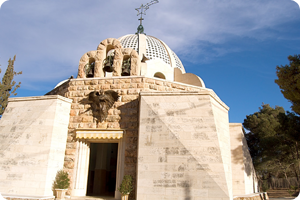
And there were shepherds living out in the fields nearby, keeping watch over their flocks at night. An angel of the Lord appeared to them, and the glory of the Lord shone around them, and they were terrified. But the angel said to them, “Do not be afraid. I bring you good news that will cause great joy for all the people.” (Luke 2:8-10) Shepherds’ Fields are associated with the place where the angel Gabriel appeared to the shepherds and informed them of Jesus’ birth. The Roman Catholic Church at the Shepherds’ Fields is located in Beit Sahour, in an area known in Arabic as Siyar el-Ghanam, meaning ‘sheep’s croft.’ On the site there are three underground caves and the archeological ruins of an olive press, stables, and a Byzantine monastery, that was probably destroyed in 614AD by the Persians. In 1950, a modern Church designed by the Italian architect Antonio Barluzzi was built on the site. The Monastery aims to resemble shepherd’s tent with its shape.
The Church of the Nativity
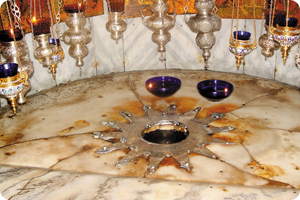
The oldest church in the Holy Land that is still in use, the original was constructed under the patronage of Constantine’s mother, Helena, who came on a pilgrimage to Palestine in 325 AD to investigate the sites associated with the life of Jesus Christ, revered since the early days of Christianity. Helena chose the Grotto of the Nativity, the traditional birthplace of Jesus, as the site for the huge basilica, which was completed in 339 AD. Inside the Church, two sets of stairs on either side of the main altar lead down into the grotto, the site where Jesus was born. A silver star embedded in white marble and bearing the Latin inscription ‘Here of the Virgin Mary Christ was born’ marks the site. In 2010 a Palestinian presidential committee was established to restore the roof of the church, in bad need of repairs. In 2012, the Nativity Church and the Pilgrimage Route were inscribed on the World Heritage List.
Milk Grotto
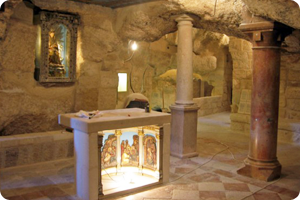
According to tradition, the Milk Grotto is where Mother Mary nursed baby Jesus while hiding from Herod’s soldiers before going to Egypt. Located southeast of the Basilica, it is an irregular Grotto hewn out of soft white rock. It is believed that some drops of Mary’s milk fell onto the rock, turning it white. Revered by Christians and Muslims, the milk-white rock is known for its healing powers and reputed ability to make nursing easier for women.
Mar Saba Monastery
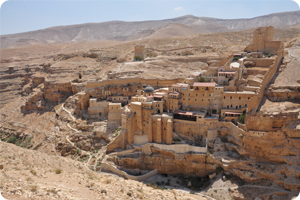
Built into the rock overlooking the Kidron Valley, 15 km east of Bethlehem, this magnificent monastery is a spectacular sight when it first comes into view. It preserves a way of life unchanged since the time of Constantine, and maintains a tradition of not allowing women to enter. The great monastic leader Saint Saba (439-532) AD, the monastery’s namesake, founded the site in the Byzantine period.
Solomon’s Pools
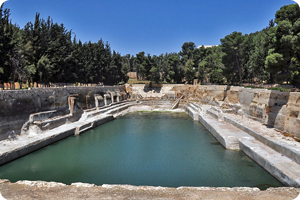
Hidden among pine trees in a small valley 4km south of Bethlehem, Solomon’s Pools consist of three huge rectangular reservoirs of stone and masonry that can hold 160,000 cubic meters of water. Although tradition attributes these to King Solomon, the pools almost certainly date from the time of Herod, and may have been conceived by Pontius Pilate. In the past, the reservoirs collected spring and rainwater and pumped it to Bethlehem and Jerusalem. They continued to function until the time of the British Mandate. Qalat Al-Burak, an Ottoman fortress dating back to the seventeenth century is located near the pools, built to protect their water sources.
Artas
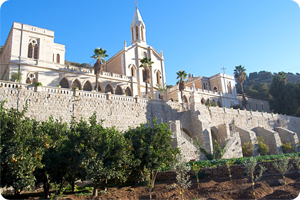
A small village located in a fertile valley, 3km south of Bethlehem. The name Artas is derived from the Latin word hortus meaning Paradise, It was likely named for its lush plants and rich soil. The village is also home to many ruins, including a Crusader convent, the foundations of a Crusader church, a castle as well as several Roman, Byzantine, Islamic, and Crusader sites. Artas has a breath-taking view of the spectacular Convent of Hortus Conclusus (closed garden) and the surrounding hills with their terraced green fields.
Herodion
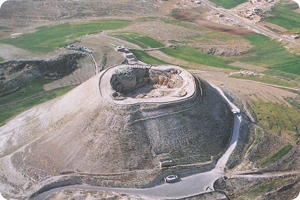
Built in a circular shape on top of a hill 6km southeast of Bethlehem, this fortress includes the remains of a huge palace built by King Herod for his wife in 37 BC. The palace contained a luxurious, round-walled building, fortified chambers, baths, and terraced gardens. Herodion fort hill dominates the landscape of the area, and offers an impressive view of the Dead Sea from its peak.
Saint Theodosius’ Monastery
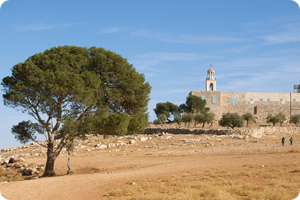
Built by Theodosius in 500 AD, the monastery is located west of the historic village of Ubediyyeh, 12 km east of Bethlehem. A white-walled cave marks the burial site of Saint Theodosius, and tradition has it that the wise men rested here after God warned them in a dream that they should not return to Herod.
